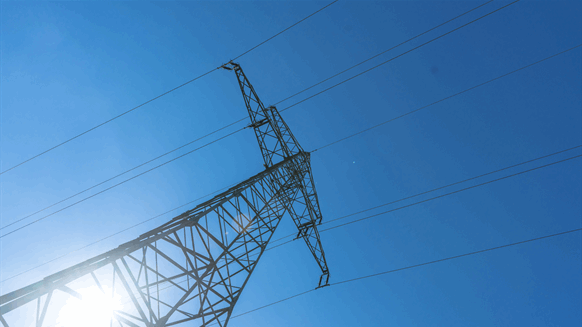The European Network of Transmission System Operators for electricity (ENTSOE) has increased the export capacity for Ukraine and Moldova by 400 megawatts (MW) to 2,100 MW for the winter.
“Since June 2024, following the destruction of numerous power plants in Ukraine and the anticipated large electricity deficit during the winter 2024-25, the Transmission System Operators (TSOs) of Continental Europe have evaluated the feasibility to increase the electricity export capacity from the neighboring EU countries to Ukraine and Moldova, while ensuring power system stability and operational security”, ENTSOE said in a statement.
“To this end, the TSOs have jointly assessed the power system conditions and looked for ways to maximize capacity for this winter”, the association added. “The results of the calculations have enabled the TSOs to secure an increase of the export capacity limit to Ukraine and Moldova”.
The new limit will be in effect from December 2024 to the first quarter of 2025. From March 2025, ENTSOE will reassess the limit every month, according to the statement on the ENTSOE website.
“This important increase of the electricity export capacity is another sign of the strong support and the solidarity of the European TSO community with the people of Ukraine and Moldova”, ENTSOE said.
Power Infrastructure Support from EU
In September European Commission President Ursula von der Leyen pledged European Union support to “repair, connect and stabilize” Ukraine’s electricity system to restore 2.5 gigawatts (GW) of capacity this winter.
Von der Leyen said the EU had so far sent over 10,000 generators and transformers to Ukraine and that a full thermal power plant was being dismantled in Lithuania to be transferred to Ukraine. Von der Leyen also committed EUR 100 million ($108.4 million) “for repair works and renewables”, to be funded using immobilized Russian assets in the EU.
“… with our two pillars, repair and connect, we cover over 25 percent of Ukraine’s needs for the winter”, Von der Leyen told a press conference in Brussels September 19. “The big bulk has of course to be produced in Ukraine”.
On a broader scale, the EU is working to” stabilize the flow of energy in the country”, Von der Leyen added. “We are boosting decentralized production of energy. This includes rolling out more renewables in the country. As you know, solar panels on rooftops are harder to hit and easier to repair than large central infrastructure.
“And while it helps secure a steadier flow of energy in the country, it also pushes forward Ukraine’s energy independence and the clean transition. We are for example dispatching solar panels to 21 hospitals in the country to ensure continued energy supply”.
Norwegian Aid
On October 24 the United Nations’ team for Ukraine announced collaboration with Norway to help meet Ukraine’s power needs during the winter. “With Norwegian financial support totaling NOK 1.1 billion ($105 million), this partnership will ensure power generating capacity in Ukraine is restored, with direct support to key regions in Ukraine”, it said on its website.
“As part of this strengthened partnership, solar panels will be installed to provide renewable backup power for schools and hospitals, while a recent agreement ensures the delivery of an additional 80 MW of capacity to the national power grid this winter”, UN Ukraine said. “Through the UNDP [UN Development Program] Energy Recovery Program, the provision of heat and water will meet the needs of over one million people and industrial consumers”.
Destroyed Capacity
In a report September 19, the UN Human Rights Monitoring Mission in Ukraine said Russian attacks reduced Ukraine’s power generation capacity by 18 GW. The mission, which visited power plants and power substations for the report, noted assaults in 2022–23 had shifted from mainly targeting transmission facilities to, at “a much larger extent”, targeting generation facilities this year.
“By June 2024, 73 per cent of the power-generating units of TPPs [thermal power plants] in Ukraine were rendered inoperative due to severe damage”, the report said. “Twenty hydroelectric generation units were also rendered inoperative”.
“By July, electricity providers estimated that Ukraine had lost approximately nine gigawatts of production capacity due to the 2024 strikes alone, equivalent to roughly half of the country’s peak electricity consumption during the winter of 2023-2024”, it added.
To contact the author, email jov.onsat@rigzone.com
element
var scriptTag = document.createElement(‘script’);
scriptTag.src = url;
scriptTag.async = true;
scriptTag.onload = implementationCode;
scriptTag.onreadystatechange = implementationCode;
location.appendChild(scriptTag);
};
var div = document.getElementById(‘rigzonelogo’);
div.innerHTML += ‘‘ +
‘‘ +
‘‘;
var initJobSearch = function () {
//console.log(“call back”);
}
var addMetaPixel = function () {
if (-1 > -1 || -1 > -1) {
/*Meta Pixel Code*/
!function(f,b,e,v,n,t,s)
{if(f.fbq)return;n=f.fbq=function(){n.callMethod?
n.callMethod.apply(n,arguments):n.queue.push(arguments)};
if(!f._fbq)f._fbq=n;n.push=n;n.loaded=!0;n.version=’2.0′;
n.queue=[];t=b.createElement(e);t.async=!0;
t.src=v;s=b.getElementsByTagName(e)[0];
s.parentNode.insertBefore(t,s)}(window, document,’script’,
‘https://connect.facebook.net/en_US/fbevents.js’);
fbq(‘init’, ‘1517407191885185’);
fbq(‘track’, ‘PageView’);
/*End Meta Pixel Code*/
} else if (0 > -1 && 95 > -1)
{
/*Meta Pixel Code*/
!function(f,b,e,v,n,t,s)
{if(f.fbq)return;n=f.fbq=function(){n.callMethod?
n.callMethod.apply(n,arguments):n.queue.push(arguments)};
if(!f._fbq)f._fbq=n;n.push=n;n.loaded=!0;n.version=’2.0′;
n.queue=[];t=b.createElement(e);t.async=!0;
t.src=v;s=b.getElementsByTagName(e)[0];
s.parentNode.insertBefore(t,s)}(window, document,’script’,
‘https://connect.facebook.net/en_US/fbevents.js’);
fbq(‘init’, ‘1517407191885185’);
fbq(‘track’, ‘PageView’);
/*End Meta Pixel Code*/
}
}
// function gtmFunctionForLayout()
// {
//loadJS(“https://www.googletagmanager.com/gtag/js?id=G-K6ZDLWV6VX”, initJobSearch, document.body);
//}
// window.onload = (e => {
// setTimeout(
// function () {
// document.addEventListener(“DOMContentLoaded”, function () {
// // Select all anchor elements with class ‘ui-tabs-anchor’
// const anchors = document.querySelectorAll(‘a .ui-tabs-anchor’);
// // Loop through each anchor and remove the role attribute if it is set to “presentation”
// anchors.forEach(anchor => {
// if (anchor.getAttribute(‘role’) === ‘presentation’) {
// anchor.removeAttribute(‘role’);
// }
// });
// });
// }
// , 200);
//});
